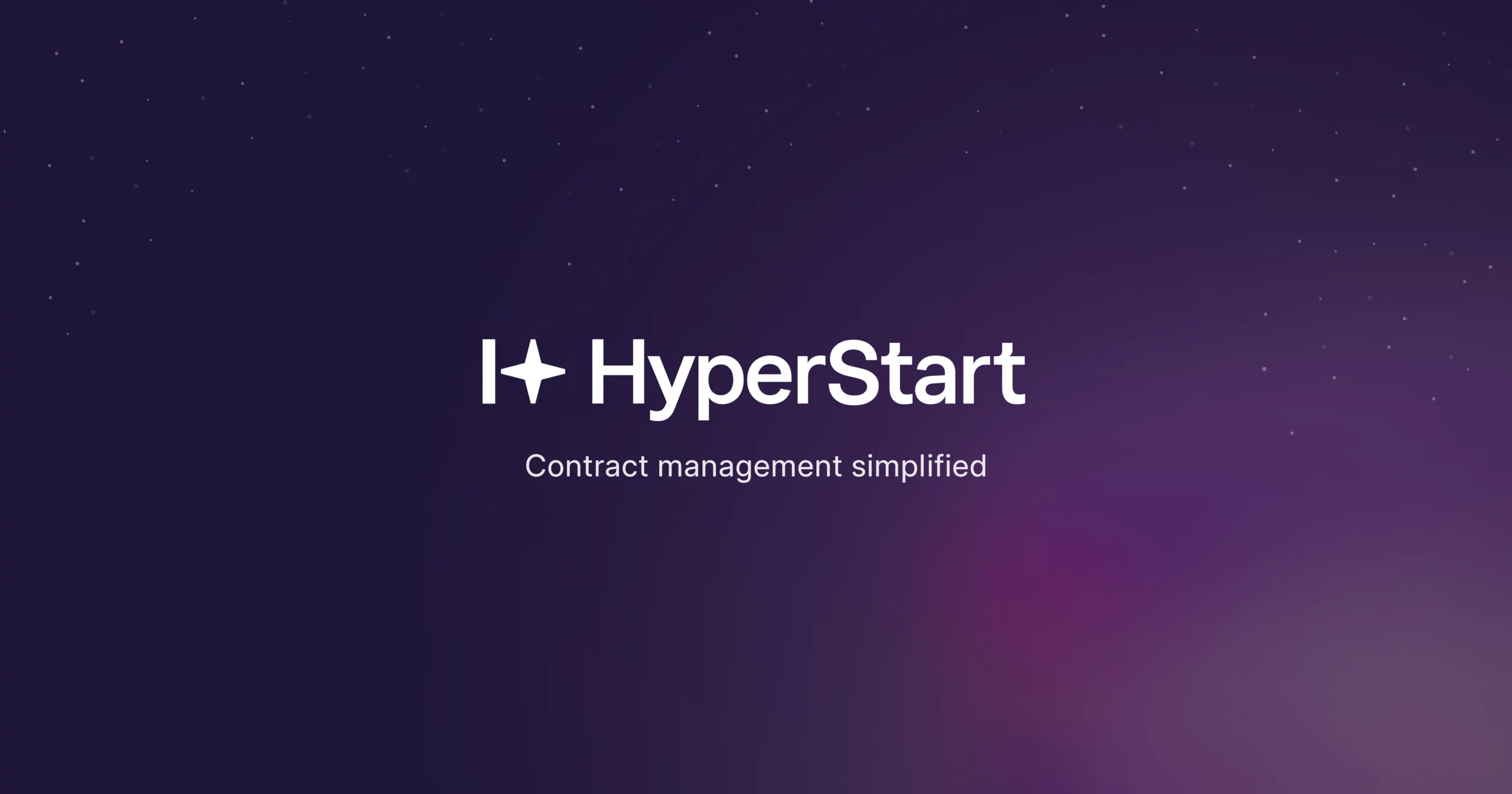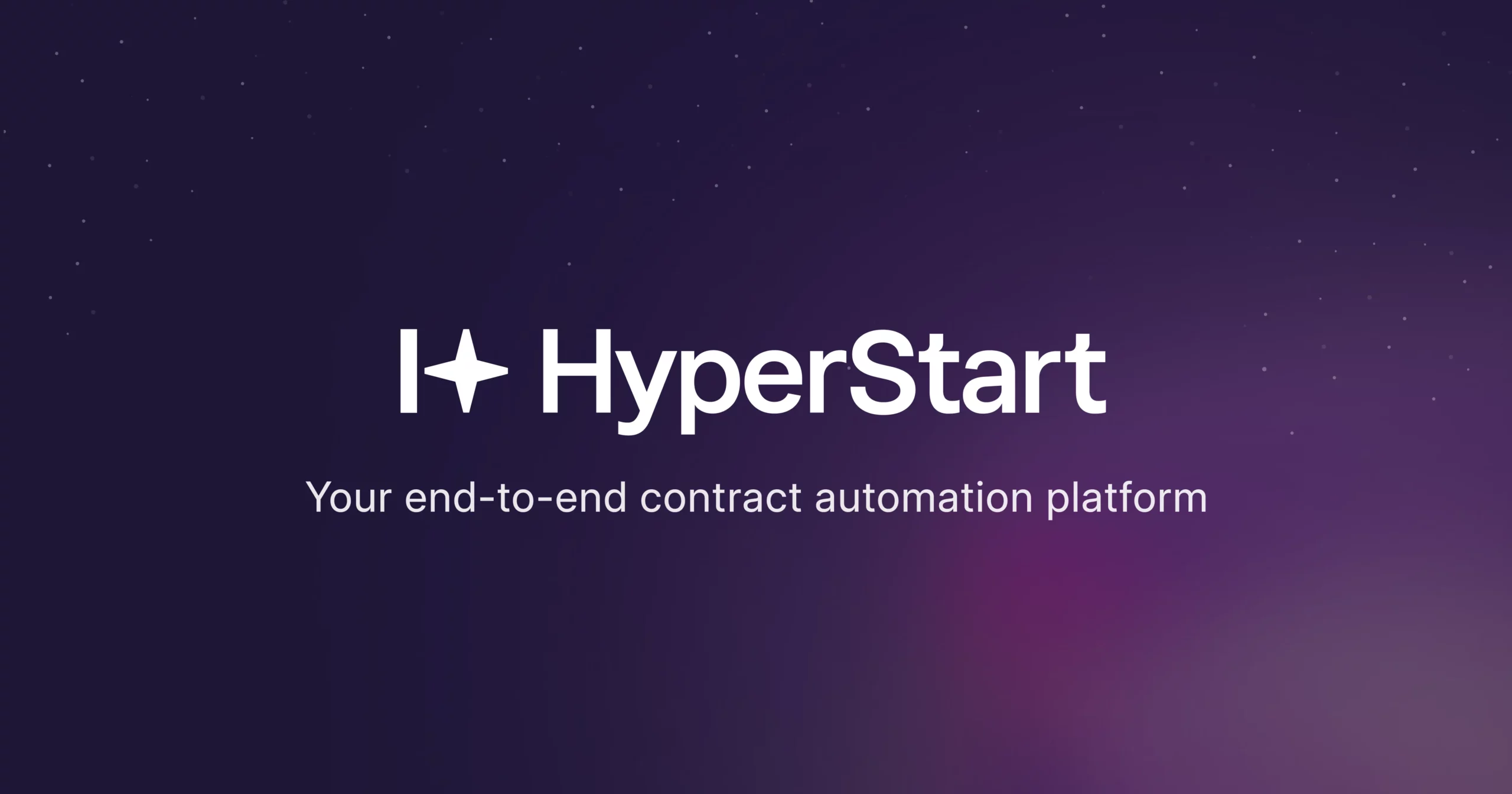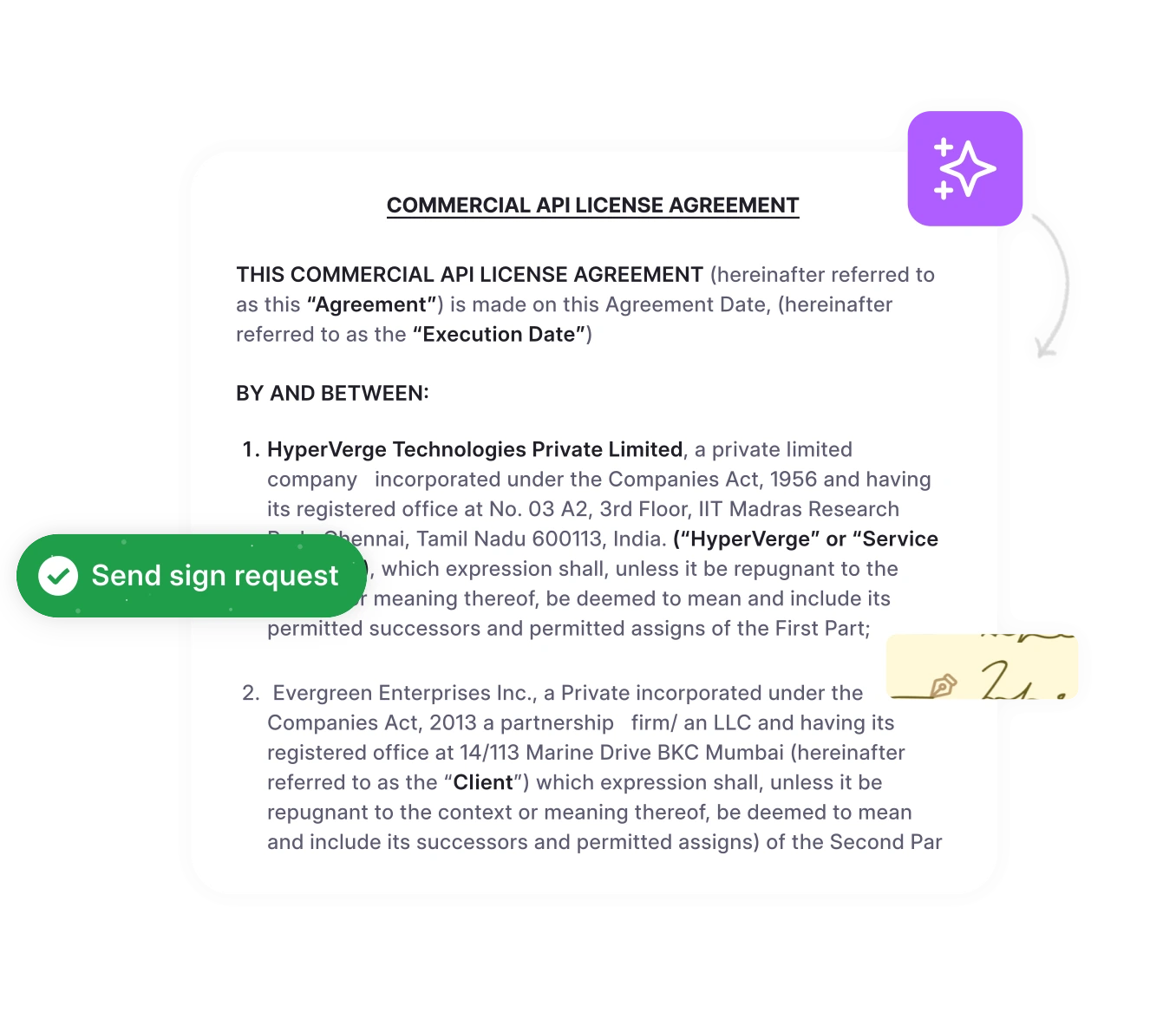Whether you’re pitching to investors or teaming up with a vendor, you need to do business without risking your classified information. That’s where a Non-Disclosure Agreement (NDA) comes in.
This guide will break down what an NDA is, what makes one useful, where they fall short, and how to manage them without the chore work.
What is a non-disclosure agreement (NDA)?
An NDA is a legally binding promise of silence that prohibits two or more parties from sharing information or allowing them to use it only for specific purposes. It turns a handshake deal about confidentiality into something you can actually enforce if things go wrong. Each side knowing it is safe helps the business relationship flourish.
The NDA is also known as a confidentiality agreement (CA), confidential disclosure agreement (CDA), proprietary information agreement (PIA), or secrecy agreement (SA). Whether you’re discussing a potential partnership, pitching to potential investors, or onboarding a new vendor, a Non Disclosure Agreement (NDA) establishes the boundaries of secrecy in a confidential relationship.
The primary purpose of an NDA: Protect proprietary information
The NDA functions as your first line of defense in protecting sensitive information during discussions with third parties. In commercial contracts, an NDA protects confidential information such as trade secrets, like manufacturing processes or algorithms, customer lists that represent years of business development, proprietary business practices and strategies that give you a competitive advantage, and financial information that could impact negotiations if disclosed.
Forget the 80/20 rule. Instead, adopt a 20/80 rule where your in-house team focuses 20% of its time on the most strategic, mission-critical contracts and 80% of its time on proactive, strategic counseling. For the 80% of contracts not strategically significant, leverage the other resources, tools, and techniques now available that are more cost-efficient.
Whether you’re a startup founder sharing your business model with potential investors, a corporation discussing a merger, or a company bringing on a new service provider, the NDA ensures that confidential information stays confidential. It sets clear expectations about what can and cannot be shared, creating accountability before sensitive conversations even begin.
Draft error-free NDAs compliantly
HyperStart’s CLM platform uses smart workflow templates so your agreements are always compliant and complete.
Book a DemoTypes of non-disclosure agreements
Not all NDAs are the same. Picking the right one depends on who’s sharing what. Different contract types have business parties sharing different things.
Unilateral NDA
A unilateral NDA is a one-way street.
Common scenarios: an inventor pitching an idea to a potential manufacturer, a company sharing a confidential and independent contractor non-disclosure agreement for keeping confidential and proprietary information under wraps
Bilateral (or mutual) NDA
A bilateral or mutual NDA means both parties disclose confidential information with legal protection. This creates balanced obligations between parties.
This bilateral confidentiality agreement between two parties is common in a joint venture where two or more companies contribute proprietary technology, processes, or intellectual property. It is also used in business partnerships where both sides share strategic plans and financial data or in M&A discussions. The mutual structure ensures neither the disclosing party nor the receiving party has an unfair advantage.
Read: What is a Mutual NDA? A Guide
Multilateral NDA
A multilateral NDA has three or more parties in the mix, with one sharing confidential information.
Common scenarios: A big group project with multiple companies, or a complicated supply chain where manufacturers, distributors, and retailers all need to be in the loop. Make sure everyone knows their obligations to everyone else, not just the person who shared the information.
Read: OneNDA: The Future of NDA Standardization
Key components of an enforceable NDA
To make sure yours is legally sound, it needs a few key things.
Identification of parties
You have to clearly name who is sharing the information and who is receiving it, with their full legal names and addresses. If you’re dealing with a subsidiary of a larger company, name the subsidiary specifically. You should also be clear about whether the receiving party’s employees or contractors are also bound by the agreement.
Defining confidential information
This is the heart of the NDA and where many succeed or fail. You need to be specific about what’s being protected, but not so broad that a court would find it unreasonable. A good definition will cover things like technical data, business plans, customer lists, client information, and anything else marked “confidential”.
What is covered: Technical or financial information, customer lists, and any information marked as “confidential”
What is not covered: Information already in public disclosure or obtained from further disclosure of such information by no fault of either party, information the receiving party already knew, or information independently developed by the receiving party.
Read: Confidentiality Agreement vs NDA
Intellectual property
Your intellectual property (IP) is a huge part of what gives your business an edge, so you want to make sure it’s explicitly covered in your definition of confidential information. This includes things like:
Trade secrets
This is the big one. Think of secret formulas, manufacturing processes, or algorithms that aren’t widely known.
Business and strategic information
This covers your unique business strategies, customer lists, and marketing plans that you’ve invested time and money into developing.
Obligations of the receiving party
The NDA needs to clearly state what the receiving party has to do to keep the information secret. Usually, this means they can only use the information for the specific reason stated in the agreement, like evaluating a potential partnership. They also have to take reasonable steps to fulfil confidentiality obligations, not share it with outsiders, and limit who sees it internally.
Time period (term)
How long does the promise of silence last? This is a key point of negotiation. For general business info, 2-5 years is pretty standard because most of this stuff loses its competitive value over time. But for trade secrets, you’ll want that confidentiality to be perpetual, or at least last as long as it’s still a secret.
Consequences of a breach
The NDA should spell out the legal action if someone breaks protocol. This includes an injunctive relief, when the court can order the person to stop sharing the information. You may choose to sue for monetary damages. Many NDAs also include a clause that says the losing party has to pay the winner’s attorney’s fees, which encourages people to stick to the agreement.
Practical guidance for NDAs with vendors
When negotiating NDAs with vendors, you’ll often encounter requests to keep archival copies of confidential information for legal compliance or backup purposes. Here’s how to handle this common issue:
- Acceptable: Allow vendors to keep one archival copy if it’s required for legal, compliance, or backup purposes.
- Non-negotiables: Confidentiality must continue as long as the information is retained.
- Negotiation Points: Define who can access retained information and limit purposes to compliance, not convenience.
- Watchouts: Be extra cautious in industries where disclosure risks are high (e.g., tech, IP-driven, M&A).
Bottom Line: Allowing vendors to keep one copy is “market standard,” but tight drafting is essential: clearly limit the purpose, extend confidentiality, and restrict access.
You must clearly limit the purpose for retention, explicitly extend confidentiality obligations to archived materials, and restrict which individuals can access the retained information.
Ready to standardize your NDA process?
See how HyperStart simplifies NDA creation with pre-approved templates and automated approval workflows.
Book a DemoLimitations of NDAs
NDAs are not bulletproof. Here’s what they cannot do
When an NDA isn’t enough
An NDA cannot protect you if someone independently discovers your secret. If they figure it out through their own research (and it’s legal to do so), the NDA won’t help you. It only covers what you actually shared with them. Also, NDAs can’t stop someone from using the general skills and knowledge they gained while working with your information.
The challenge of enforcement
Proving a breach and seeking legal recourse involves difficulties.
- First, you must discover that a breach occurred, which isn’t always obvious when there’s no paper trail.
- Second, you must prove that the disclosure actually happened with forensic information and that it caused you harm.
- Third, even if you win in court, collecting damages or enforcing an injunction against a party with limited assets may be impossible.
Advice for in-house legal counsel
Your business team needs an NDA before sharing confidential information, but legal negotiations can stall a promising deal. Lucrative opportunities need not be held hostage by NDA disputes. Here’s a focused, practical approach to concluding NDA negotiations:
1. Stick to the basics
2. Stick to the “standard” terms
3. Don’t sweat the small stuff
4. Be ready to change your standard NDA during negotiations
5. Always keep your eyes on the prize
Read: Everything You Need to Know About Standard Contracts
According to contract management experts, 99% of NDAs can be handled by tools and lower-cost resources with access to a good playbook. A senior lawyer reviewing routine NDAs represents time poorly spent. By using a workflow tool, NDA requests can go to a trained team that handles standard agreements and escalates only when something genuinely needs senior legal review.
Managing the NDA lifecycle effectively
Signing the NDA is just the beginning. To really get the protection you’ve bargained for, you need to manage it well.
- Track everything: Know when your NDAs are signed, when they expire, and what information you ‘ve shared under them.
- Train your team: Make sure your employees know what they can and can’t do under the NDAs you ‘ve signed.
- Enforce: Keep good records of what you ‘ve shared and when. This will be crucial if you ever have to prove a breach.
- Review regularly: Take a look at your NDA templates every now and then to make sure they ‘re still up-to-date and not causing unnecessary delays.
Modern legal contract lifecycle management platforms can automate much of this tracking and monitoring, freeing your legal team to focus on higher-value strategic work rather than administrative tasks.
Take control of your contract lifecycle
From creation to signature and storage, see how automation can streamline your NDA management.
Book a Demo










